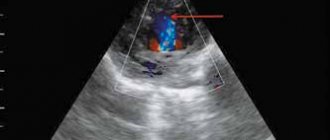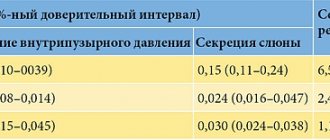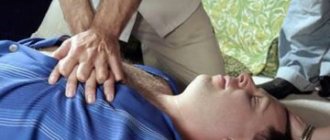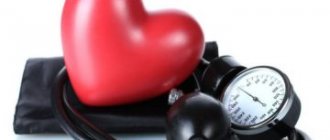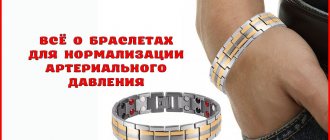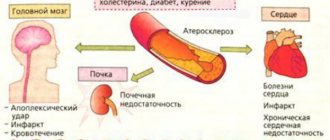Scientists have proven the ability of malachite, hematite, aventurine, jet and many other stones and crystals to influence blood pressure levels. If you constantly wear a bracelet made of correctly selected stones, you can adjust your blood pressure to increase in case of hypotension or decrease in case of hypertension. But it is important to know which stone to wear, on which hand and for how long.
The healing properties of stones for hypertension
Stone treatment is especially widely used in Eastern folk medicine. How do they work in relation to the human body? The fact is that crystals produce energy that emits vibrations similar to the human body. At the time of treatment, the patient does not feel anything, but the energy of the stone works to eliminate ailments, affecting cells, tissues and organs. Thus, blood pressure is normalized, stress is relieved and the nervous system calms down. What stones can cope with hypertension and improve overall well-being?
Magnetite
An iron-black mineral, ground into powder, helps with iron deficiency in the blood, stabilizes the heart and reduces blood pressure. Magnetite is also an analgesic and anti-inflammatory agent. The stone is used as inserts in medical biocorrectors, as well as balls or bracelets. You can wear it in any form, but it is worth considering that during acute attacks its effect can only aggravate the situation. The stone has a powerful magnetic field, so it is recommended to remove jewelry from time to time. Combine wearing magnetite with other doctor’s prescriptions, and you can forget about high blood pressure for a long time.
Malachite
Even in Ancient Rus', malachite was considered a stone that fulfilled wishes and had healing properties. The stone reduces blood pressure, normalizes the functioning of the cardiovascular system, and also has a beneficial effect on the condition of the entire body. Wearing malachite helps restore strength and slow down the natural aging process.
Amber
Amber stone
The mineral belongs to the group of resins and is widely used in medicine all over the world. Lithotherapy specialists claim that the main property of amber is the treatment of hypertension. With its help you can eliminate sudden changes in pressure. In addition to normalizing blood pressure, the stone treats diseases of the cardiovascular system, helps with arthritis and varicose veins, and also eliminates headaches. Wearing jewelry with amber is recommended for weather-sensitive people whose well-being depends on magnetic storms.
In addition to the minerals described above, sapphire, red coral and dolomite affect the state of blood pressure. Treatment of hypertension with stones can be combined with any other methods.
Treatment of low or high blood pressure with natural minerals is primarily based on faith. If a person convinces himself that the chosen methods of alternative medicine are capable of performing a miracle, so it will be. Of course, it is unreasonable to expect a cure with stones alone. When treating blood pressure problems, a comprehensive approach is needed.
Stone in the ureter - symptoms and treatment
Treatment of ureteral stones can be conservative (medication) or surgical (surgery).
Conservative treatment
If the stone has not completely blocked the ureter, the patient has normal body temperature, and pain is not expressed, then conservative treatment is acceptable. It includes:
- drinking plenty of water;
- antispasmodic drugs (No-Shpa);
- non-steroidal anti-inflammatory drugs (Diclofenac);
- alpha-1 adrenergic blockers (Tamsulosin).
All this together contributes to an increase in fluid flow through the ureter, its relaxation and spontaneous passage of the stone. Treatment can be carried out both at home (under the remote supervision of the attending physician) and in a medical hospital.
Surgery
If the stone is large, there are spikes on its surface, it has been in the ureter for a long time and an inflammatory focus has managed to form around it, then the probability of spontaneous passage is 10-15%. You should not try to expel the stone for more than 2-3 days. The choice of treatment tactics depends on the patient’s condition and the location of the stone:
1. If there is no fever and severe pain, the stone is removed from the ureter endoscopically (without punctures). A special instrument, a ureteroscope, is inserted into the bladder through the urethra and used to try to remove the stone. This is possible for small stones.
If the size of the stone does not allow it to be removed immediately, there are thorns on its surface, and an inflammatory focus has formed around it, then the stone is crushed. To do this, a special instrument is brought to it - a lithotripter; it can be pneumokinetic, but now laser ones are more often used. The stones are crushed, and their fragments are evacuated down. After such an intervention, the ureter is drained with a stent. A stent is a thin tube with two coils. One curl remains in the kidney, the second in the bladder. The stent carries out the outflow of urine from the kidney. Placing a stent will help prevent the formation of strictures, narrowings of the ureter in the area where the stone was previously located. The stent is installed for 2-4 weeks.
2. If the stone is in the upper part of the ureter and it is not possible to “reach” it from below, remote shock wave lithotripsy (ESWL) is recommended. The procedure is performed under intravenous anesthesia. The patient is placed on a special table, and the location of the stone is determined under X-ray and ultrasound control. A special membrane is applied to the lumbar region and the stone is crushed using focused pulses. This method is most effective for stones with a density of no more than 800-1000 HU. Subsequently, the stone fragments migrate downward and come out on their own.
3. If a stone completely blocks the outflow of urine from the kidney and this is accompanied by severe pain, pyelonephritis, fever, severe general malaise, then urgent hospitalization is necessary. It is not advisable to remove a stone if septic kidney damage is suspected. First of all, it is necessary to restore the flow of urine; this can be achieved in two ways:
- Ureteral stenting - installation of a thin tube to drain urine;
- Installation of nephrastomic drainage - used if it is not possible to move the stent past the stone in the ureter. Under ultrasound guidance, a puncture is made in the kidney and a tube is inserted. The tube is either sewn to the skin, or there is a special balloon at the end of the tube that inflates and prevents the tube from falling out. Urine flows through the tube. After this, the doctor prescribes antibacterial, anti-inflammatory drugs, and antispasmodics.
If the kidney is blocked and there is no outflow of urine, taking antibiotics is contraindicated. This can lead to septic shock and death of the patient. The stone is removed only after the general condition has stabilized.
The main methods of surgical treatment are endoscopic, that is, they do not require incisions. To perform the operation, instruments are inserted through the urethra. Not all clinics are equipped with such facilities, and patients with ureteral stones may be offered open or laparoscopic surgery. In terms of their effectiveness, the methods are not inferior to endoscopic ones, but the patient recovers longer [8][9].
Stones that increase blood pressure
Hypotension is a condition where blood pressure is always below normal and is extremely dangerous for humans. As a result of this pathology, a whole complex of concomitant diseases develops, and the patient’s health condition worsens. Alternative medicine is aimed at eliminating hypotension, and stones that normalize blood pressure play an important role in this.
Jet
The second name of the mineral is black jasper. It is a petrified tree of gray or black color. Jet increases blood pressure if applied to the kidney area. In addition, it calms the nervous system, which is also associated with blood pressure. In treatment it is used heated. Usually the mineral is worn as a bracelet on the wrist.
Aventurine
Green stone with veins. As a therapeutic agent, it improves blood circulation and cardiac activity, therefore it is indicated for hypotensive patients. In general, the stone has a beneficial effect on the body’s energy and calms. How a talisman can improve mood and give a state of happiness. The therapeutic properties of aventurine appear if you use it in the form of pebbles during a massage. To increase blood pressure, it is recommended to wear beads with this mineral, a bracelet or a ring.
Hematite
Hematite or bloodstone has a positive effect on the body's blood circulation. Scientists have concluded that the stone is able to stop bleeding of any severity. The gem is placed on the area that needs therapy. The mineral is actively involved in increasing blood pressure and is highly undesirable for hypertensive patients. In the east, hematitis treats blockage of venous vessels and normalizes the nervous system. As a therapeutic agent, the stone is used in the form of jewelry or massaged with hematite balls.
Turquoise
Turquoise
Mineral is able to determine the health status of its owner. If the stone becomes dull when worn, this indicates that it is time to consult a doctor and undergo an examination. At the same time, turquoise loses its energetic powers. To renew them, the product must be worn for some time by one of the family members who is in good health. The blue mineral is a universal remedy for getting rid of all diseases, including hypotension. It is not recommended to wear the stone for older people whose bodies are polluted. Turquoise has a calming effect and improves heart function.
Stones that reduce blood pressure
Normally, a person’s blood pressure should be 110 over 70 or 120 over 80. If the readings increase slightly, this indicates “pre-hypertension.” When the tonometer shows a value of 140, it means hypertension has set in and it’s time to lower the pressure. In combination with medications, it would not be a bad idea to use alternative medicine, such as natural stones that lower blood pressure.
Sapphire
Helps with various ailments: reduces blood pressure, relieves insomnia, treats colds. The only nuance of the stone is its sensitivity to human energy, so it is recommended for positive individuals to wear it. If the owner of the gem is prone to anxiety, depression and other negativity, then the stone will work in a negative direction. Sapphire is worn as a necklace or ring on the left hand and is best worn in the summer, when the gem can absorb solar energy.
Obsidian
The stone is of volcanic origin. In nature it occurs in different shades: gray, yellow, red and brown. Helps heal the kidneys, reduces blood pressure, and also strengthens the immune system and affects a person’s internal harmony. Obsidian releases energy that absorbs the bad intentions of its owner, turning his consciousness to change for the better. Place of wear: ring on the middle finger.
Chrysolite
The mineral is golden, yellow-green or olive in color. Peridot directs energy to the heart chakra. Positively affects the nervous system, reduces blood pressure. The mineral can also relieve stuttering and insomnia. For maximum effect, the stone should be worn in a ring on the left hand. To maintain energy in the mineral, it is held in the hand from time to time.
Pearl
Pearl stone
This natural mineral attracts not only its beauty, but also its unique properties to influence the human body. It contains calcium carbonate, which emits healing vibrations and puts all functions in order. Pearls are used in the treatment of the gallbladder, liver, cardiovascular system and other diseases. The mineral is used in powder or tincture form. Pearl water is similar to “living water” and helps with any inflammatory processes.
How to properly use and combine pressure stones?
Lithotherapy brings the desired effect if you follow certain rules for using stones. It is advisable to use them in their natural form or with minimal cutting. Avoid massive jewelry with metal frames. It is better if it is just an open stone hanging on a cord or chain. To treat diseases, it is recommended to wear products made from the selected gem closer to the body, and preferably in direct contact with the skin. This could be a pendant or beads hidden under clothes, a bracelet, a hand or a ring. To normalize pressure, the position of the stone on the body should be taken into account. Wearing it on the left hand helps to calm, relax and lower blood pressure. If the stone is placed on the right hand, the pressure will increase and the condition will return to normal.
How do stones affect blood pressure?
A correctly selected gem promotes the harmonization of human energy flows, and therefore self-healing.
Enter your pressure
Move the sliders
120
on
80
Stone treatment dates back several centuries and is widely used in Eastern folk medicine. How does healing happen? Crystals emit energy at a vibration frequency similar to that created by the human body. The vibration is imperceptible, but the energy of the stones affects organs, tissues and cells, which has a positive effect on pressure. Many crystals have a calming effect on the nervous and cardiovascular systems. After all, stress affects the increased production of hormones, which leads to pressure surges. The method of wearing the crystal also influences the elimination of hypertension or hypotension. If the jewelry is worn on the left hand, it induces peace and tranquility, reduces pressure and tension. When jewelry with gems is worn on the right hand, the pressure increases because they have a stimulating effect on the body. In order for lithotherapy to bring the desired effect, you should remember the following rules:
- choose stones with the least processing;
- avoid massive frames (it is better to wear an open stone on a cord);
- maximum contact of the pebble with the skin and the correct choice of place to wear it (on the finger, in the ears, on the wrist or neck).
